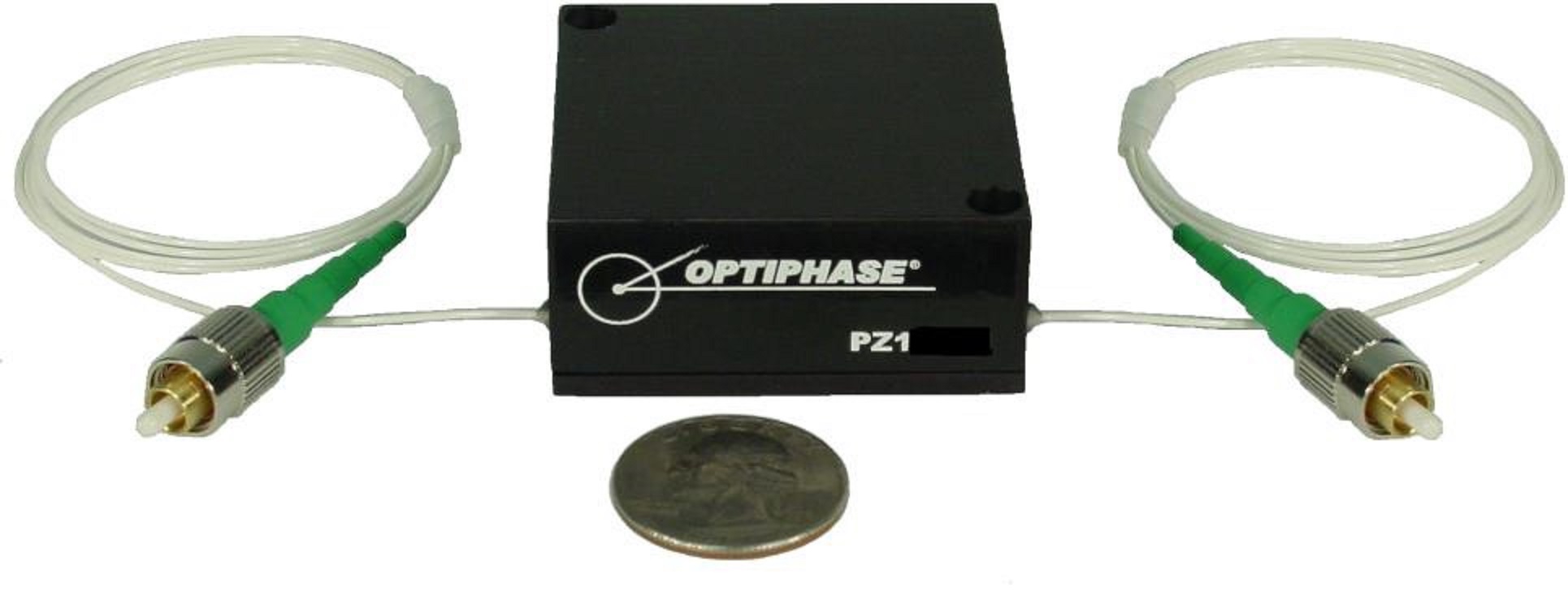Product information "PZ1 Fiber Stretchers"
High Speed; Fiber Type SM, PM, RC; 780-1625 nm; Fiber Length 5-17 m; Fiber Stretch 0.035-0.21 µm/V; Fiber Leads 1 m, 0.9 mm OD Jacket; Connector Type Bare Fiber, FC/PC, FC/APC
The PZ1 series are the high-speed members of Optiphase’s family of fiber stretchers. At the core of the PZ1 high-speed fiber stretchers is a fiber wound piezoelectric element for use in a wide range of optical interferometric measurement and sensing system applications.
Optiphase’s expertise in the design, manufacture and use of all-fiber interferometers has produced a unique multi-layer winding approach resulting in an enhanced modulation function while maintaining a high operational frequency. PZ1 high-speed fiber stretchers are available with single mode (SM), commercial polarization maintaining (PM, Panda or Bowtie) or SM reduced cladding (RC) fiber types
PZ1 high-speed fiber stretchers deliver a high performance to cost ratio, exceeding all other known competitive devices. The compact and low-profile form factor makes the PZ1 series easily configurable into small spaces.
In addition, Optiphase fiber stretchers are unique in that they do not require proprietary drivers. For most low-voltage applications (<±15 V), Optiphase stretchers can be driven by standard electronics such as signal generators, op-amps or other laboratory equipment without modification. For more information on how to drive PZ1 high-speed fiber stretchers see the downloadable application note.
Key Features:
- High Speed
- Compact Package
- Fiber Type: Single Mode (SM), Polarization Maintaining (PM )or Reduced Cladding SM (RC) Fiber
- Multiple Termination Choices
- Unique Multi-layer Winding
- Can Be Driven With General Purpose Electronics
- Operational Wavelength: 780 to 1625 nm
- Fiber Stretch: 0.035 to 0.21 µm/V
- Optical Path Displacement (n = 1): 0.05, 0.2, 0.3 µm/V
- Time Delay: 0.00017 to 0.001 ps/V
- Fiber Length: 5, 12.3, 17 m Inclusive
- Fiber Wind: 4 Layer (1 Layer PM Version Available)
- Optical Loss: ≤0.5 dB
- Maximum Voltage Range: ±500 V (Off Resonance, 1,000 V Peak-to-Peak)
- Fiber Leads: 1 m, 900 μm Loose Tube
- Connector Type: Bare Fiber, FC/PC, FC/APC
- Dimensions: 50.8 x 50.8 x 21.6 mm
Applications: Open Loop Demodulation; Sensor Simulation; Variable Optical Delay; General Purpose Fiber Interferometry; Large-angle Modulation of Interferometric Phase




